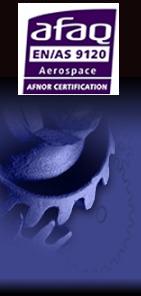Many bearings use a rolling element retainer (or cage as it is also referred to) in order to space apart the rolling elements. There are many varieties of bearing retainer design to suite particular applications. In a very simplified form, the key types for standard rolling element bearing applications are;
- Pressed steel (often suffixed as C)
- Solid brass (often suffixed with M or MB)
- Phenolic (often suffixed TV or TVP)
Although there are other retainer material types and configurations, these three cover the vast majority used throughout industry. Retainer selection should be based on:
- Application loads and speeds
- The environment (temperatures, contamination etc)
- Acceleration issues
- Stable high speed running aspects (if applicable)
- Vibration levels
- Life/Cost/Down time arguments
- Lubricant issues
Primarily bearing retainers are used to separate the rolling elements, thus reducing wear between elements, reducing heat build up and extending bearing life. Pressed steel cages are by far the most common. Some years ago brass was extremely popular due to its lower noise characteristics, ease of material handling and material pricing. These days, with the advent of higher precisions as standard, steel cages perform just as well. The brass cage does however still have many uses, especially in harsh environments such as rock screening and heavy corrosive areas. The Phenolic or fibre resin cages are often found in spindle bearings where their light weight and stability under higher loads and speeds lend themselves to many machine tool applications.
Bearings with retainers are not suitable for all applications. For instance, in the case of high loads and low speeds, a full complement bearing (ie no retaining mechanism) would be preferable. Simply due to the higher number of rolling elements, the bearing can spread higher loads between more elements, however adequate lubrication must be provided in these cases
The following table gives a general overview of a small selection of cage material types and their performance.
| Materials |
Temp. (°F) |
Speed (dN) |
Outgassing |
Particle Generation |
Cost |
| PEEK |
480 |
800,000 |
Excellent |
Excellent |
Moderate |
| Vespel® (SP-1) |
500 |
600,000 |
Excellent |
Excellent |
Low |
| Nylon |
200 |
300,000 |
Good |
Good |
Low |
| Teflon® |
500 |
75,000 |
Good |
Good |
Low |
| Phenolic |
300 |
600,000 |
Poor |
Poor |
Low |
| Torlon |
450 |
750,000 |
Excellent |
Excellent |
Moderate |






